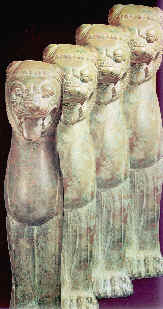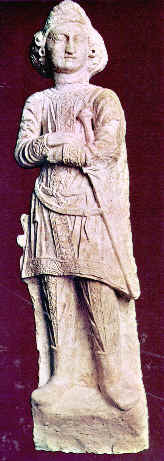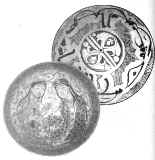|
|
Address: Seyed Khandan, Shariati Ave., Tehran, Iran
Tel.: (+98) (21) 8863001 to 003
Fax: (+98) (21) 8863007
Opening hours: 9-18; Tuesday to Sunday
Type of Museum: Archeological
Type of Objects: Antique objects and Calligraphic specimen
Collection of objects in Reza Abbasi Museum recalls an era that is unknown, mysterious, and full of the endeavors of human for survival, fighting nature, gaining benefits and victory over the environment. This collection or objects in Reza Abbasi Museum is on permanent display in five galleries and also some services.
Pre-Islamic Gallery
Objects preserved in this Gallery are from the 2nd millennium BC to the end of Sassanid Dynasty. Potteries and metal objects that show simple and pleasant shapes with decorations often derived from nature and each are from various regions such as Azerbaijan, Susa or Lorestan. Discovery and usage of materials, advances in knowledge and technology have created objects in Median and Achamenian periods and the subsequent eras; humanity gained such a level of skill that could think about beauty and perfection and was able to create different objects. Silver objects with gold decorations from the Sassanid period, which bring this gallery to a conclusion, reflect this advancement.
The Islamic Gallery, part 1
In the first Islamic Gallery, metal objects from the Buyid Period that have designs derived from the Sassanid era with Kufic Scripts, showing early Islamic influences; potteries from the 9th to the 11th centuries AD from Neishabour also with Kufic scripts or pottery wares with splashed clear glaze, or multicolored wares attributed Sari are on display. This collection continues with potteries from Seljuk period that shows different techniques, various materials and a greater variety of designs, such as enamel, under glaze painted, monochrome glazes, lustre painted, etc. Most of these were made in cities like Rey, Kashan and Gorgan. Oil lamps, incense burners and other metal objects of Seljuk period bring this display to a conclusion.
The Islamic Gallery, part 2
Objects from 13th to the end of 19th centuries are on display in this gallery. With the attack of Mongols, trends, fashions and types of makes, as well as centers of fabrication, changed. Potteries with different colors and decorative backgrounds, in the initial section of this gallery, are some samples of this period. Metal objects from Timurid period, which also was a very turbulent time in the history of Iran, are some remained ones of this era. Pottery and metal wares from Safavid period, which shows a different situation prevailing in country, display differing designs, decorations and colors. Metal wares, textiles and also polychrome lacquer objects with bird and flower, Qajar period, reflect a new era in the history of art and culture of Iran and bring this collection to a conclusion.
The Painting Gallery
From the early centuries of Islamic period ( i.e.12th century ) there are few remains. Schools of painting in each era are known by the city or cities that were centers of power. At the beginning of the Painting Gallery, there are pages of "Shah-Nameh" from 14th century and examples of painting from Schools of Shiraz and Tabriz; also paintings from other ancient manuscripts and books of literature that have a high standing in culture of Iran, show the schools of Herat and Shiraz in 15th century and Tabriz, Qazvin, and Isfahan during 16th and 17th centuries. Works by Reza Abbasi, the famous painter of his period, who is the inspiration for naming this Museum in his honor, could be seen along with works by several of his students. This brings the collection of Safavid paintings to a conclusion. Traditional flowers, with pleasant colors and birds drunk with the fragrance of flowers, are some samples of Qajar paintings. This brings the works on display to a completion in this gallery.
The Calligraphy Gallery
Decorated samples of script in Kufic, Naskh and Thulth of Qur'an and other books. Works of great calligraphers in script of Nastaliq and Shekasteh like: Mir Emad, Mirza Gholam Reza and Abdul Majid Darvish and the samples of manuscripts from 15th to the end of 19th centuries, have been collected in this gallery.
Temporary Exhibition Gallery
Reza Abbasi Museum has allocated part of its activities to short-term and temporary exhibitions, therefore, it is possible to see on display some works that are in the storage of the museum. When opportunity arises, let the masters in different fields of art, use this space for displaying their works.
Museum Library
Library of Museum has a valuable collection of books and magazines, and also old sets of newspapers. This is a complementary to the collection of Museum and provides appropriate resources for researchers and scholars in various fields of art.
Training Courses
Reza Abbasi Museum has allocated space for training courses. Thus, it is possible to teach various fields of art that are related to museum.
Bookshop
Bookshop of the Reza Abbasi Museum is a site for obtaining publications issued by Iranian Cultural Heritage Organization and as a center for offering other art related publications.




|
|




